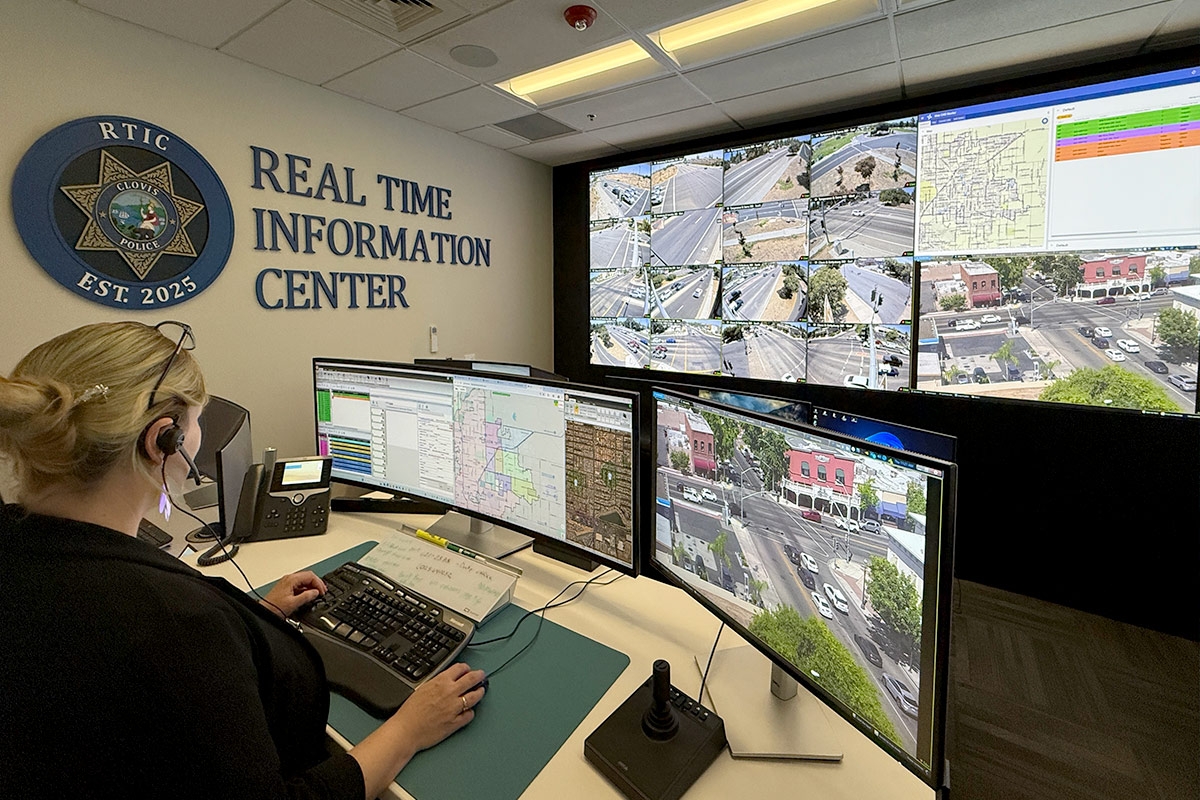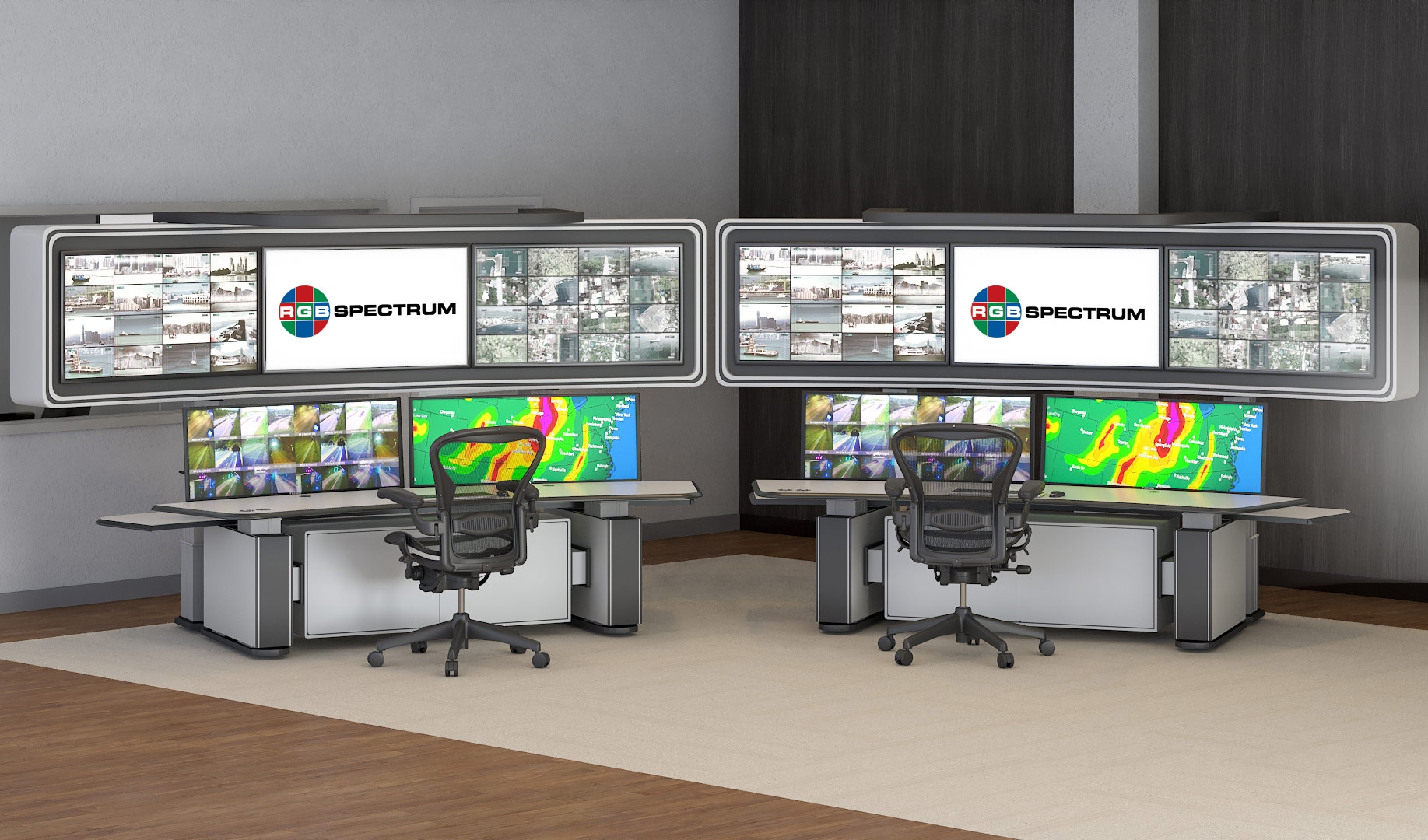UCLA's Laboratory of Neuro Imaging Presents Advanced Immersive Visualization
UCLA's Laboratory of Neuro Imaging (LONI) strives to improve understanding of the brain in health and disease. LONI is a leader in the development of advanced computational algorithms and scientific approaches for the mapping of brain structure and function. The lab develops the framework and tools to rigorously evaluate dynamic changes in brain structure and function particularly on processes such as development, aging and the progression of specific diseases. The complexity of contemporary neuroscience demands sophisticated image data visualization systems to enable neuroscientists to do research on large, complex data sets.
LONI contracted with Fakespace Systems, an integrator of immersive visualization and virtual reality technologies, to develop a multi- dimensional visualization system for LONI's innovative Data Immersive Visualization Environment (DIVE).
Fakespace used its Curved-Screen Virtual Reality system for the DIVE. Malcolm Green, Senior Account Executive for Fakespace, explained, "The system provides the visual impact, high immersion, and field of view useful for interactive research and collaboration. It features cutting-edge projection technology, including proprietary image distortion and correction to accommodate the systems' curved-screen geometry. The LONI lab required real-time multi-image projection of extremely sophisticated, multi-dimensional computer-generated graphics."
"To support this demanding requirement, the MD-CSVR utilizes RGB Spectrum's state-of-the-art SuperView multi-input, multi-image display processors. After reviewing other alternatives, we found the SuperView to be the best solution."
According to Rico Magsipoc, Chief Technology Office for UCLA's LONI Lab, "the DIVE facility is used for research, professional collaboration, and presentations. The DIVE allows scientists to investigate multi-dimensional neuro-imaging data through a unique ability to visually immerse themselves inside their data. Our audience includes researchers and scientists, biologists, neurologists, and medical doctors. The DIVE is also used for educational outreach on neuroimaging and neuroinformatics to K-12 students and National Youth Scholarship program participants."
The DIVE room is dominated by a 28-foot wide by 8-foot tall, 150-degree floor-to-ceiling curved screen. The facility uses three SuperView display processors to feed real-time computer graphics, high-definition video, and pre-recorded demonstrations to drive this massive screen. The processors receive computer and video inputs, including 2-D and 3-D neurological imagery generated from powerful visualization workstations equipped with the latest in 3-D graphics, SGI Onyx mainframe supercomputers, virtual reality stereoscopic imagery, neuroinformatics containing data mining and statistics, digital disk recorders, and PowerPoint presentations. The processors also receive component, S-Video Y/C, and composite video inputs from cameras, VCRs, and DVD and DV players.
The SuperView processors integrate these various inputs and output the combined images to three ceiling-mounted DLP projectors at their native 1280 x 1024 SXGA resolution. The resulting projection is a 3480x1024 immersive image. Operators control the SuperView processors' signal selection and versatile image manipulation capability with an AMX wireless touch screen controller. Images can be either stereo or mono, any size and positioned anywhere in real time, overlapped, correlated side-by-side, and zoomed and panned to emphasize a particular area of interest.
Magsipoc commented, "the SuperView units offer the highest level of image processing performance enabling us to display intricate 3-D imaging with real-time movement and rotation. The response has been great. The SuperViews' real-time performance and image quality is excellent."
The Laboratory of Neuro Imaging (LONI), directed by Arthur W. Toga, is located in the School of Medicine at the University of California, Los Angeles. The research facility is dedicated to the development of scientific approaches for the comprehensive mapping of brain structure and function. For more information, call (310) 206-2101 or visit http://www.loni.ucla.edu/.
Fakespace Systems, headquartered in Marshalltown, Iowa, is a pioneer in the development of immersive visualization and virtual reality technologies for research and commercial market applications. Fakespace Inc. created many of the industry's first major interactive breakthroughs, including the first commercially available virtual reality system and the first commercially available gesture recognition system. For more information, call 641-754- 4649 or visit www.fakespace.com.
RGB Spectrum® is a leading designer and manufacturer of videographic and multimedia hardware subsystems. Products include the View™ family of video windowing systems, the RGB/Videolink® line of scan converters, the DGy™ digital recording system, Quadra® universal scaler and synchronizer, SynchroMaster® keyers and overlayers and SuperWall™, ComputerWall® and MediaWall® multi-screen display controllers. RGB Spectrum is based in Alameda, California, and can be reached at 510-814-7000 and on the internet at http://www.rgb.com.
RGB Spectrum is a leading designer and manufacturer of mission-critical, real-time audio-visual solutions for a civilian, government, and military client base. The company offers integrated hardware, software, and control systems to satisfy the most demanding requirements. Since 1987, RGB Spectrum has been dedicated to helping its customers achieve Better Decisions. Faster.™


